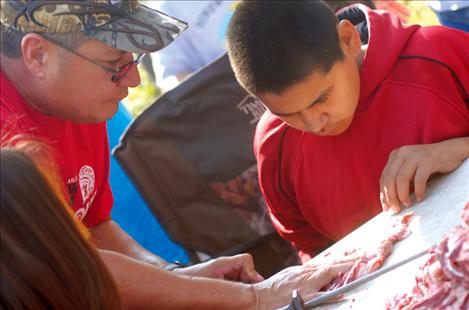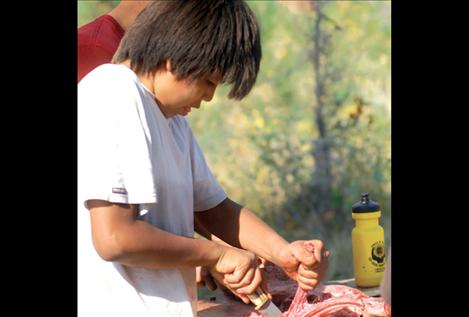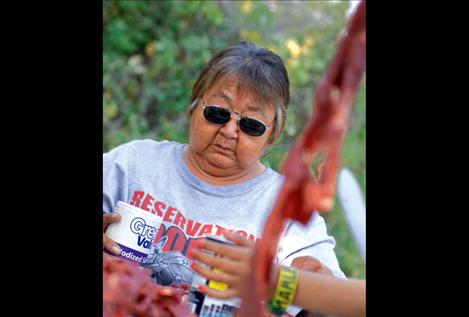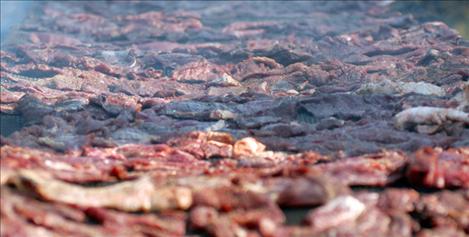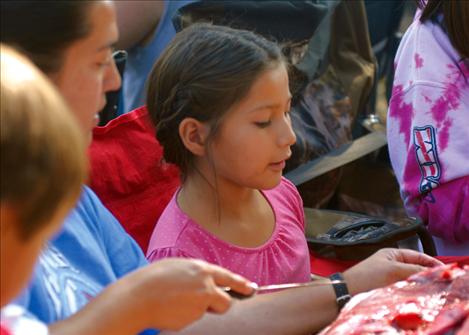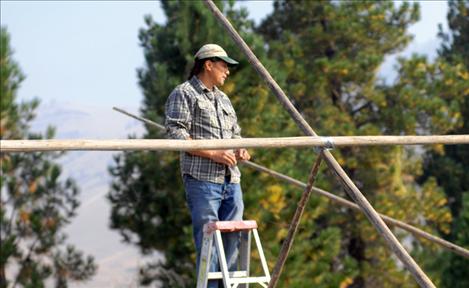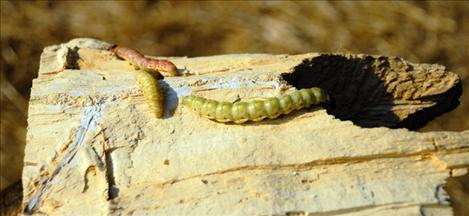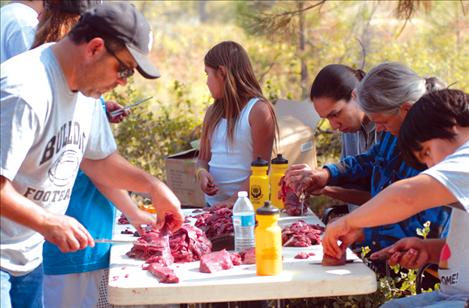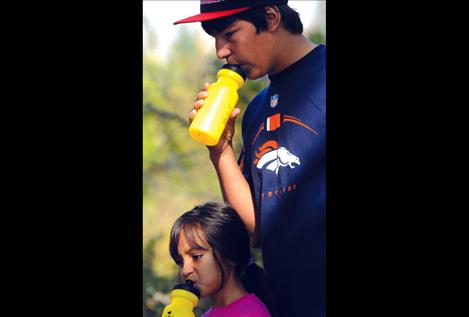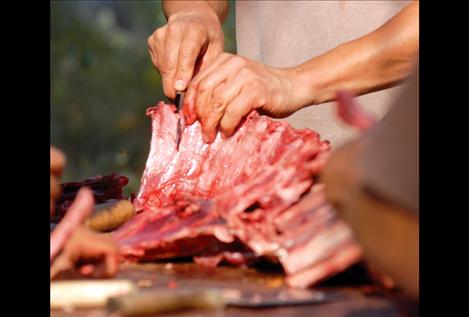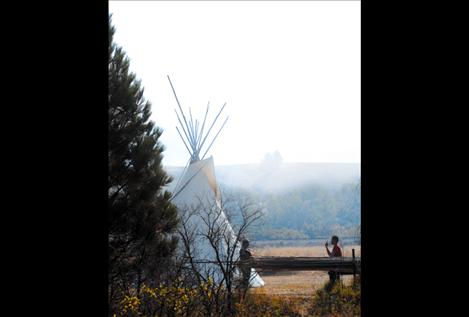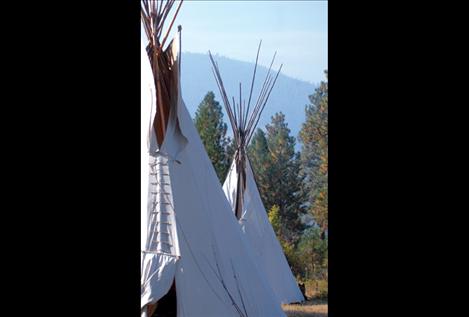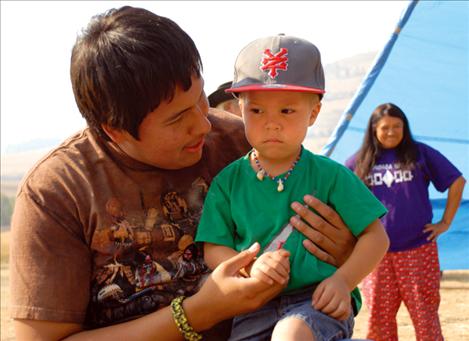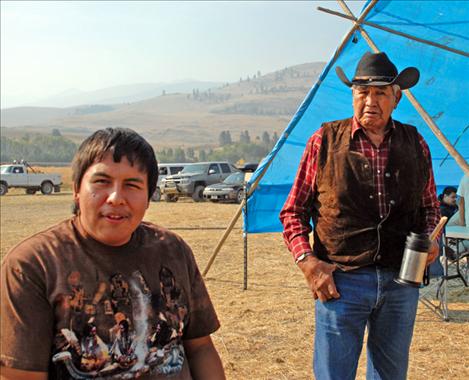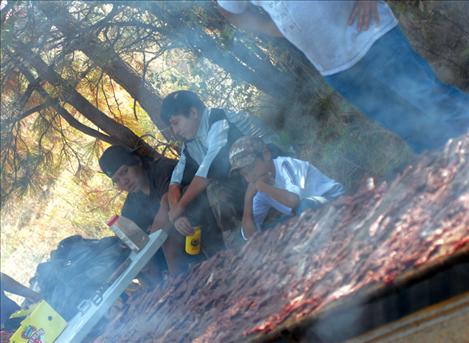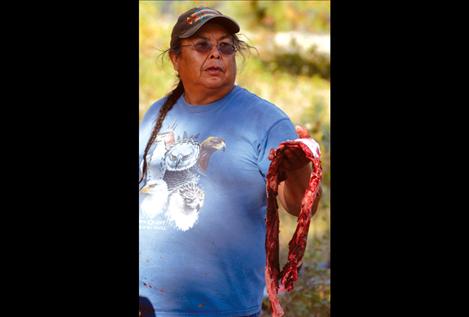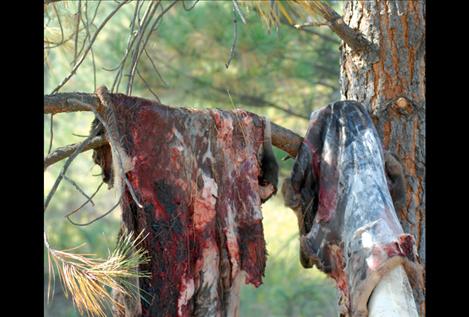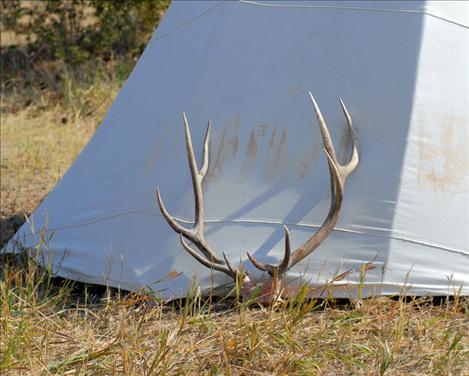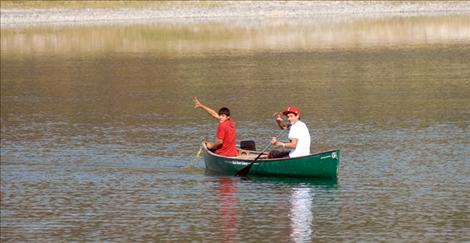Traditional hunting camp teaches leadership
Hey savvy news reader! Thanks for choosing local.
You are now reading
1 of 3 free articles.
Teepees facing east along the Flathead River caught the morning sun and the calming burble of the water. Although the scene might have unfolded hundreds of years ago, pickups, a couple of camper trailers and blue plastic traps hinted at a modern camp.
But the camp, sponsored by the American Indian Institute and the Montana Traditional Circle of Elders and Youth, teaches the traditional Indian way.
This year the camp is northwest of Dixon at an area called “the sinkholes” on the banks of the Flathead River.
Camp Director Willie Stevens said Johnny Arlee started the hunting camp at the Agnes Vanderburg camp on Valley Creek and held it there for four or five years. Then Charlie Quequesah took over and also held it up there. When Stevens took the reins, he held camp at Little Prairie up in the Jocko.
This year he moved it again.
“Woodcock hunting camps traditionally moved all over,” Stevens said.
Young Native American hunters harvested three elk and a mule deer in the first two days of the Traditional Youth Leadership Hunting Camp.
“What we do,” he explained, “is take hunters 13 to 17 years old and teach them hunting safety, hunting skills, game habitat and take them hunting.”
The day starts with a morning dip in the river about 5 a.m., “to cleanse them for the hunt,” Stevens said.
Then the guides, older, experienced hunters, split the youngsters up into groups. With a large number of guides this year, the ratio of guide to hunter is 2-to-1 or even 1-to-1. The men teach the young men and women how to take care of the animals with respect and pray for them.
“The animal give up his life to sustain us,” Patty Stevens, Willie’s wife, explained.
The camp stresses traditional values, and fall is the time of year families come and gather the winter supply of game. They also pass down the culture and traditions of the Salish so when it’s the young people’s turn to be leaders, they’ll hand the knowledge down, too
“More and more families are coming,” Willie said, including single-parent families.
At night Willie has a circle around the fire, and campers pass a “talking stick,” even though some of the kids are shy.
Vance Home Gun and Peter Ryan Matt from the youth group Yoyoot Skwkwlmlt were at hunting camp. Yoyoot Skwkwlmlt, a group of about seven or eight kids, meets every Sunday in St. Ignatius. They do a lot of language work, and Home Gun teaches them what he knows about Salish culture. He calls in the “bad boys” like elder Pat Pierre, Home Gun said, grinning and gesturing with his thumb at Pierre, when he needs an expert opinion.
Matt and his sister Cora were there for the day, but Home Gun was camping. He’s attended hunting camp the last five years.
“It’s something I really enjoy. It’s the only time we come together, hunt and dry meat,” Home Gun said, adding that many families don’t participate.
“You’ve just got to know how to take care of the meat and not waste it, use every part of the animal,” Home Gun said. “I was fortunate. My folks and grandparents were older when I was born, and they were raised in traditional homes.”
Lots of adults and kids don’t know how to shoot a deer or elk, gut it, skin it, care for it properly, cut it up and make it into dry meat.
“Nowadays the kids have Walmart,” Home Gun said with a smile and a shrug.
One young man who has learned some hunting skills is Lloyd Mclean. He’s 14 and shot his first deer, a mule deer buck, at this hunting camp with his very first shot. He joined one of three groups of people cutting meat in thin strips to dry.
Tray Shenandoah also sliced meat. Shenandoah is from the Onondaga Nation near Syracuse, N.Y.
Although Shenandoah flew into Missoula, his brother and his family drove over 2,200 miles to the hunting camp. All six came “to see what they do out here.”
Onondaga means “rolling hills,” and their small reservation is made up of rolling hills in central New York. The Onondaga have a buffalo herd on their reservation, and Shenandoah and a group of friends hunt whitetail deer together. There are no elk in the area, however. He’s also never taken care of the meat in the woods before.
“It’s been a long time since the Onondaga did this,” he said, gesturing to the teepees set up along the Flathead River and the smoke curling up from the drying meat.
Elijah Cahoon and his friends were hanging out by the fire waiting to taste test the dry meat. Cahoon shot his first bull elk this year near Perma.
While one boy thought it was cold in the mornings, the young men were enjoying hunting camp, the warm weather and learning more about their culture. They were also dreading making up schoolwork and leaving camp.
Willie and Patty have a plan to help make leaving easier, and it’s sure to be popular with the youngsters. They want to have more family camps.
“Our idea is to have a camp each season — out gathering berries in summer and a winter camp in the snow,” Willie said.















